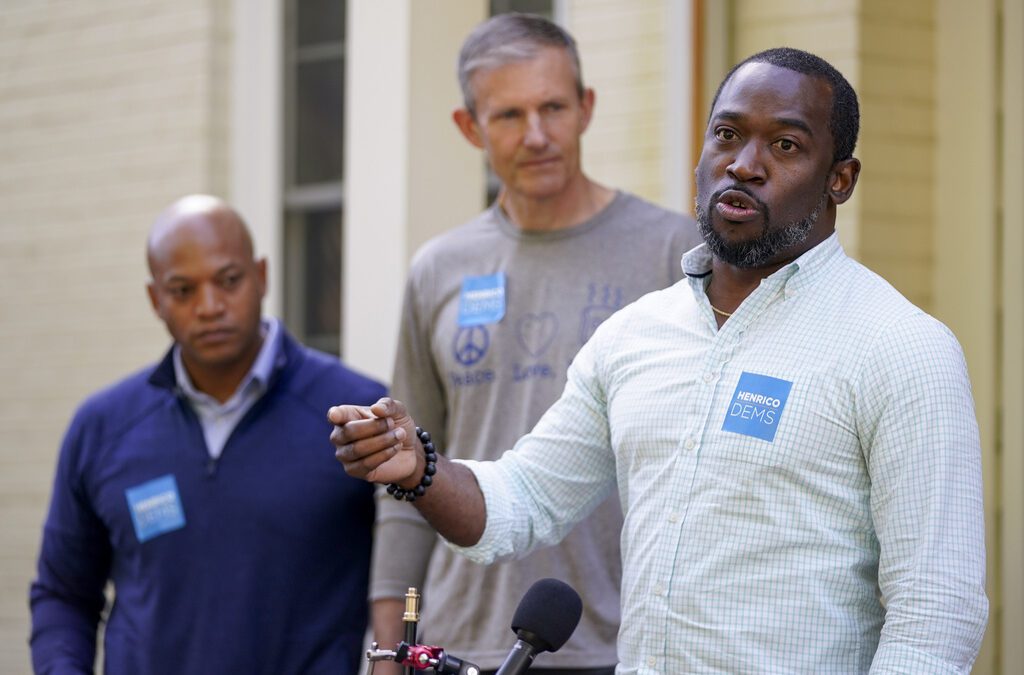Black and Latino college graduates often struggle with higher levels of student loan debt and borrowing terms that are more predatory when compared to their white counterparts, according to a new report from the Center for Responsible Lending (CRL) and the NAACP.
Most American students graduate with debt. Nearly 70% of graduating seniors in 2016 borrowed to cover the cost of college, according to the report, but there are significant differences across racial and ethnic groups.
Eighty-five percent of black students took out student loans in 2016, with the average student graduating with about $34,000 in debt, according to the Center for Responsible Lending. Conversely, only 68.9% of white students were forced to take out student loans, and the average amount borrowed was under $30,000.
In Virginia, 56% of college graduates accrue student loan debt by the time they graduate, with the average student graduating with $29,887 in loans, according to the Institute for College Access and Success.
The numbers vary from school to school, however. Virginia State University, a historically black college, has a much higher rate of students graduating with debt. The Virginia Mercury reported that 92% of VSU graduates leave with student loan debt.
“Rather than lifting people out of poverty and providing access to the middle class, student debt is further entrenching the racial wealth gap and perpetuating the cycle of poverty that results from systemic lack of access to resources, capital, and affordable credit,” the CRL report concludes.
The Center for Responsible Lending says that unless action is taken, the problem will only worsen. It lays out several suggestions to tackle the issue, including improved repayment options, debt relief for students, stronger servicing standards and oversight, reform of for-profit schools and providing debt-free college options for students.
In Virginia, the General Assembly finally took action this year to address the cost of college, passing legislation to freeze in-state tuition rates at public universities. There has been no legislation to tackle student loan debt, however, despite its impact on Virginia’s college graduates.
Ninety-three percent of Virginia college students and recent graduates said that their debt made it harder to pay bills and/or kept them from buying a home, according to a 2017 survey from Virginia21, a non-partisan organization that seeks to engage young people in the political process.
“Student debt is a significant drag on the economy as it depresses the purchasing power of millions, preventing people from starting families, investing in their own businesses, going back to school and buying homes,” the CRL report reads. “And because students of color carry larger debt burdens, these consequences also exacerbate the racial wealth divide by impacting families of color the most acutely.”
The CRL report underscores its findings by highlighting the structural inequalities and “broad societal discrimination” that makes it difficult for African-American and Latino students to fund their college experiences.
These inequities and the resulting racial wealth gap–the average white family has 10 times more wealth than the average black family–force students of color to take out loans that can cause them to accumulate “high levels of unsustainable debt,” according to the report.
The results of this over-reliance on borrowing has long-term consequences for African Americans. More than half of all African American heads of household between the ages of 25 and 40 have student debt and nearly 49% of black borrowers who entered higher education in 2003-2004 as undergraduates had defaulted by 2016. That number is expected to jump to 70% by 2024.
The CRL report also finds that black bachelor’s degree graduates are unable to afford their loans at five times the rate of white graduates. Perhaps most startling is the fact that African American students who graduate with a degree are still more likely to default than white borrowers who never finish a degree.
Even when black graduates make regular payments, their debt load doesn’t get more manageable over time. “Almost half of African American graduates owe more on their undergraduate student loans four years after graduation than they did when they received their degree, compared to 17% of white graduates,” the CRL report reads.
The CRL also called out predatory for-profit institutions that target African American students with costly and “low-quality’ programs that “fail to provide reliable education benefits.”
Black students also face “substantial job discrimination” and face a wage gap after graduating, the report reads. A 2018 analysis from the Economic Policy Institute, a left-leaning think tank, found that black college graduates between the ages of 21 and 24 earn $3.34 less per hour than their white counterparts, a difference of about $7,000 per year.
The borrowing numbers aren’t quite as grim for Latino students, who take out student loans at rates similar to their white peers. Sixty-six percent of Latino students borrow an average of $25,452. But Latino students are more likely to drop out of school because of their debt burden. In 2009, 31% of Latino student loan borrowers dropped out of college.
The drop-out issue is particularly stark at for-profit schools, 67% of Latino borrowers at four-year for-profit colleges leave school before graduation.
In general, Latino students are more likely than their white counterparts to default on their loans. Fifteen percent of those in repayment are in default and 29% are in “serious delinquency.”
“The cost of college is simply too high for many Latino students, leaving them with loans as the only option to finance their education. Student loan debt has seriously affected the wealth-building ability of Latino college graduates and their families,” the CRL report reads.
Higher education is frequently regarded as a pathway out of poverty and a ticket to economic success, but the Center for Responsible Lending argues otherwise. “Higher education is not only failing to help close the racial wealth and income gaps, it is fueling their growth. This crisis must be immediately addressed with fundamental reforms that provide meaningful opportunities for students to build a financial future and participate fully in our economy.”
Politics

Biden administration bans noncompete clauses for workers
The Federal Trade Commission (FTC) voted on Tuesday to ban noncompete agreements—those pesky clauses that employers often force their workers to...

Democratic shakeup in Virginia primaries for governor, lieutenant governor
Richmond Mayor Levar Stoney quit his bid for governor and jumped into the race to be the Democratic nominee for lieutenant governor. The race for...
Local News

The zodiac signs of 12 iconic women offer insight into their historic accomplishments
Zodiac signs can tell you a lot about someone’s personality. Whether they’re an earth, water, air, or fire sign, these 12 categories (which are...

Virginia verses: Celebrating 5 poetic icons for National Poetry Month
There’s no shortage of great writers when it comes to our commonwealth. From the haunting verses of Edgar Allan Poe, who found solace in Richmond's...





